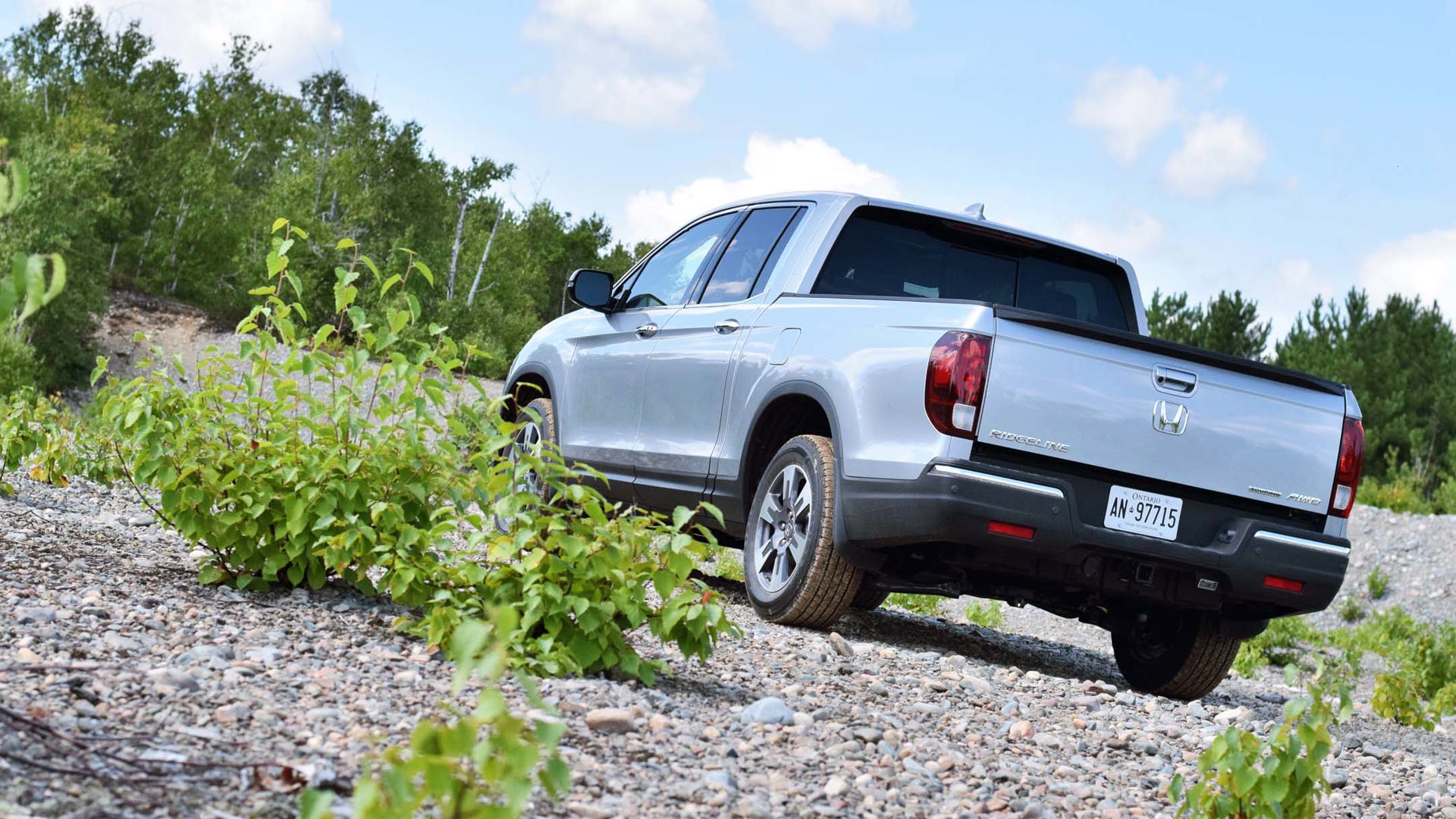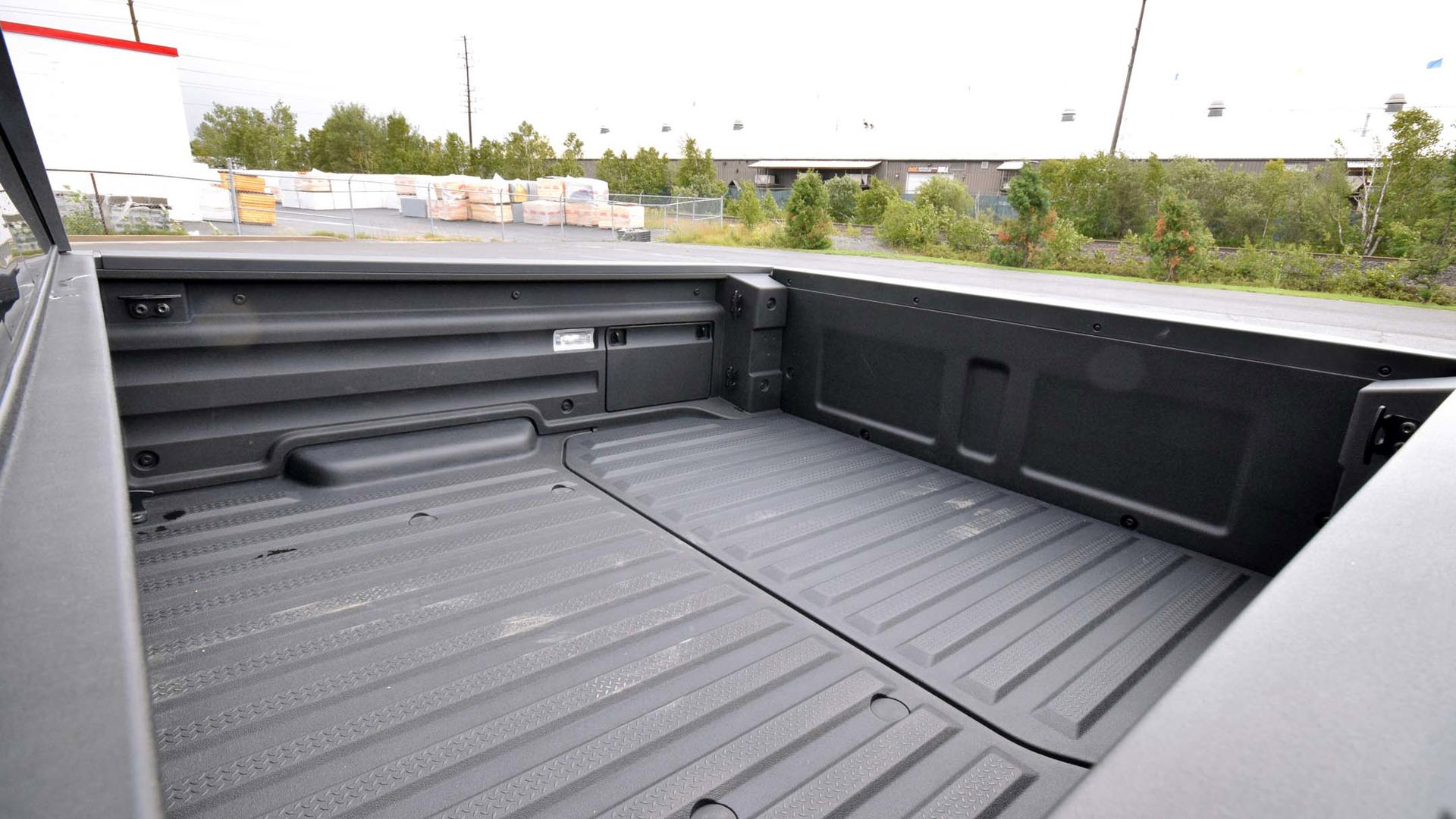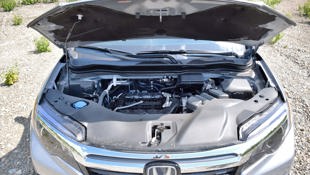 AutoTrader SCORE
AutoTrader SCORE
-
STYLING8/10
-
Safety8/10
-
PRACTICALITY8/10
-
USER-FRIENDLINESS8/10
-
FEATURES9/10
-
POWER8/10
-
COMFORT8/10
-
DRIVING FEEL9/10
-
FUEL ECONOMY8/10
-
VALUE6/10
Mostly because it’s handy, flexible, decent on fuel and comfortable, I like the Honda Ridgeline.
To clear this up from the onset: the Ridgeline is not a truck for big-truck guys, and your writer is not a big-truck guy.
Numerous friends accost me vigorously because of this.
Mostly, these are friends that run big-ass Dodges and Fords used mainly to haul a grocery-load from Costco, or a set of golf clubs. The guys who buy the off-road package to tackle occasional gravel roads. The guys who tow a small boat twice a year, and feed a big engine and take up a lot of space the other 363 days. The guys who sound their V8 engine at every chance, but sob violently after refueling.
The big truck guys say rude things about your writer when he gushes about the Ridgeline. I’m regularly called rude names, offered cupcakes with pink frosting, pressed about man-satchel ownership, and accused of a questionable use of glitter.
So, to clear this up from the onset: the Ridgeline is not a truck for big-truck guys, and your writer is not a big-truck guy. So, let’s proceed.
Generation two of Honda’s pickup looks slick and tidy. It’s like a modern, trim and athletic take on something like a Baja or El Camino, not the love child of a Chevy Avalanche and a toaster oven. Visually, it’s blatantly a pickup, but leaner and less burly than the norm.
And it’s improved on all fronts, while leaving the much-loved attributes of the original Ridgeline untouched.
On board? The Ridgeline looks big, and feels even bigger. The floor is smooth, free of lumps and protrusions that facilitate under-floor driveline componentry. This translates into a rear seat that’s extra-roomy, with seat bottoms that can be flipped upright to create a smooth cargo floor – or a canine lounge facility. The Ridgeline is easy to enter and exit, with a tall driving position accessed without an excessive climb. At 5”10, your writer needed simply slide over and give a little upward push on his tiptoes, to access his seat. My dog (clumsy) and my grandmother (mobility-challenged) could both hop aboard, unassisted.
In typical Honda fashion, the cabin is dotted vigorously with storage cubbies that would make an Ikea closet organizer jealous. In the doors, centre bin and centre console, clever implements include sliding divider trays, multi-tiered compartments, and a humorous number of power outlets, some running 2.5 A (ampere), for supercharged device re-juicing. No issue staying organized, recharged and tidy on the go.
Interior styling is unsurprising: dark, tidy and logical. Designers seemingly passed on creating a revolutionary new pickup cabin design, to ensure loyal Honda owners feel right at home on board.
In back, the shallow box still features a monster trunk beneath the rear half of its floor, drainable, lockable and illuminated, and accessed via a tailgate that swings open both ways (down or sideways). An in-bed audio system uses exciters to turn the entire bed into a sort of enormous plastic speaker, with sound that’s loud and clear to keep tailgate parties on perpetual standby. Playing Lamborghini acceleration noises through the in-bed audio system as you drive away in traffic never gets old.
The box is neat. Clever. Innovative. But it’s also fairly small and shallow, and makes the big-truck guys wonder where you’d put your ATV. It’s designed more for camping coolers, bicycles, canoes and beach toys than skids of roofing shingles or big power toys. It’s handy first, size second – though flat-hauling of drywall panels is still possible, thanks to the box’s widening to 5 feet across (some 5.4 inches wider than before). Towing capacity is rated at 5,000 pounds (2,268 kg).
Camping? The in-bed trunk handles wet, soggy, smelly things, locking them away in an easily hosed-out bin. Or fill it with ice and beverages, and lock the lid as needed via the remote. Or, stick your sleeping provisions inside to keep them clean and dry. Or stuff it with a few coolers to keep them securely out of the sun. A 120 V power outlet in the bed proved handy to power various inflators, a laptop charger, a tailgate blender, Tiki lights, a television and other provisions. Tie-down cleats are positioned intelligently, making it easy to keep cargo in place.
Around town, drivers can expect none of the rigid jiggle-jounce or leaf-springiness characteristic of ladder-frame pickups, a more planted handling feel on rougher roads, steering that’s more crisp and responsive, and easy parking, aided partly by a lean turning circle and very-wide-angle backup camera. The Ridgeline is, by and large, no more difficult to position or maneuver than a family sedan. Actually, much of the time, you feel like you’re driving a great big Honda Accord.
Brake feel backs this whole car-like thing up too: The Ridgeline’s left pedal has a fine-tuned action, with a touch of dead space at the top to minimize touchiness, followed a few millimeters later by urgent clamping of the pads against the rotors and a nearly sports-car-like level of precision response to pedal modulation.
And, if you’re cruising the highway at a good clip, noise levels are kept well in check, and the light but relatively precise steering facilitates a good attachment to the centre of your lane. Further, in emergency brake-and-evade maneuvers, the Ridgeline feels keen to go where it’s pointed, flatly, without drama, and without throwing its weight around like a flubbery Jerry Springer stage brawl.
The new powertrain isn’t unfamiliar in basic specification: a 3.5L V6 (not a four-cylinder, as many big-truck guys think) drives all four wheels via an automatic six-speed transmission. Output has climbed to 280 horsepower, a notable improvement mostly apparent as a more eager and effortless feel during light acceleration in traffic. Opened up for passing or merging, the direct-injected engine pulls delightfully to high revs, and emits the Honda family VTEC snarl as the tachometer closes in on the upper half of its sweep.
Avoiding such driving, but without use of the ECON mode, the tester averaged about 9.5 L/100 km on the highway, towards a test average of 11.7 L/100 km. To compare, the new Tacoma averaged 16.0 L/100 km in similar driving, though it was considerably less broken-in. A Ram EcoDiesel saw its test average consumption land at 9.3 L/100 km, to compare. Your results will vary.
Off-road driving on rough terrain is a mixed bag. The suspension travels abundantly when required, soaking up whumps and moguls admirably and with minimal tossing around of occupants. The steering is on the appreciably light side during lower-speed off-road maneuvers, reducing driver stress during tight-quarters maneuvering, perhaps in avoidance of obstacles that might threaten a tire. But as conditions get rougher, you’ll hear from the front bumper first – it hangs lower than anything else beneath the Ridgeline, and your writer wished at times for a touch more ground clearance from the front.
You may hear from the suspension, too.
Though it takes a rough or craggy surface indeed to degrade ride comfort in an off-road setting, the Ridgeline’s suspension can become noisy and transmit more vibrations and harshness back into the cabin than a big-truck, should rough gravel, washboards or rocks be passing beneath. Though the on-road ride is distinctively car-like, Ridgeline’s suspension design trades away some feel of off-road durability, characteristic of a big-truck model, on rougher terrain.
Traction and electronic aids proved effective. Drivers can dial in one of several off-road modes at a button press, though left in “Auto” the Ridgeline tackled anything thrown its way intelligently. Slight interventions from the traction control system are apparent even as a wheel unloads when the Ridgeline pitches sideways or diagonally crosses a mogul – preemptively stopping slippage from an almost-airborne wheel before it starts.
But in all, the biggest improvement, from the driver’s seat, is apparent on the road, not in the dirt. The overall feel of refinement, and the sense of a pickup truck that drives like a car, are stronger and more finely honed now. The Ridgeline is quieter, more comfortable, lighter on its feet, less cumbersome and more eager to perform.
Gripes? The navigation and infotainment interface falls far behind most other truck competitors for its display, responsiveness and graphical horsepower, and for the money, some shoppers will expect a more exciting look to the cabin, or perhaps a splash of colour to break up the darkness.
The Ridgeline has two other problems. The first is that overbuying in the pickup truck segment is a national sport, facilitated by numerous incentives that ease access to big power and capability on the relative cheap. If you need a little truck to tow a little bit of stuff, you buy a big truck, and the Ridgeline is not a big truck. Second, Ridgeline is relatively pricey, with the tested Touring model carrying a $47,000 sticker.
A common sentiment ties these together. It goes something like this: “Why would I pay nearly fifty grand for this, when the Ford / Dodge / GM are bigger, cost less, have a V8, and can tow heavier stuff?”
A fair question, and one that a niche group of pickup shoppers will continue to answer with their dollars. Ridgeline isn’t for everyone; but for who it’s for, it’s a relatively compelling package. Ultimately, if you’re into camping, outdoor adventure, flexibility and fuel efficiency more than towing, hauling and massive payload capacity, it’s a worthy test drive.
Competitors:
Chevrolet Colorado
GMC Canyon
Nissan Frontier
Toyota Tacoma
| Engine Displacement | 3.5L |
|---|---|
| Engine Cylinders | V6 |
| Peak Horsepower | 280 hp @ 6,000 rpm |
| Peak Torque | 262 lb-ft @ 4,700 rpm |
| Fuel Economy | 12.8 / 9.5 / 11.3 (L/100 km, city/hwy/comb) |
| Cargo Space | N/A |
| Model Tested | 2017 Honda Ridgeline Touring |
| Base Price | $47,090 |
| A/C Tax | $100 |
| Destination Fee | $1,695 |
| Price as Tested | $48,885 |
|
Optional Equipment
None
|
|















































